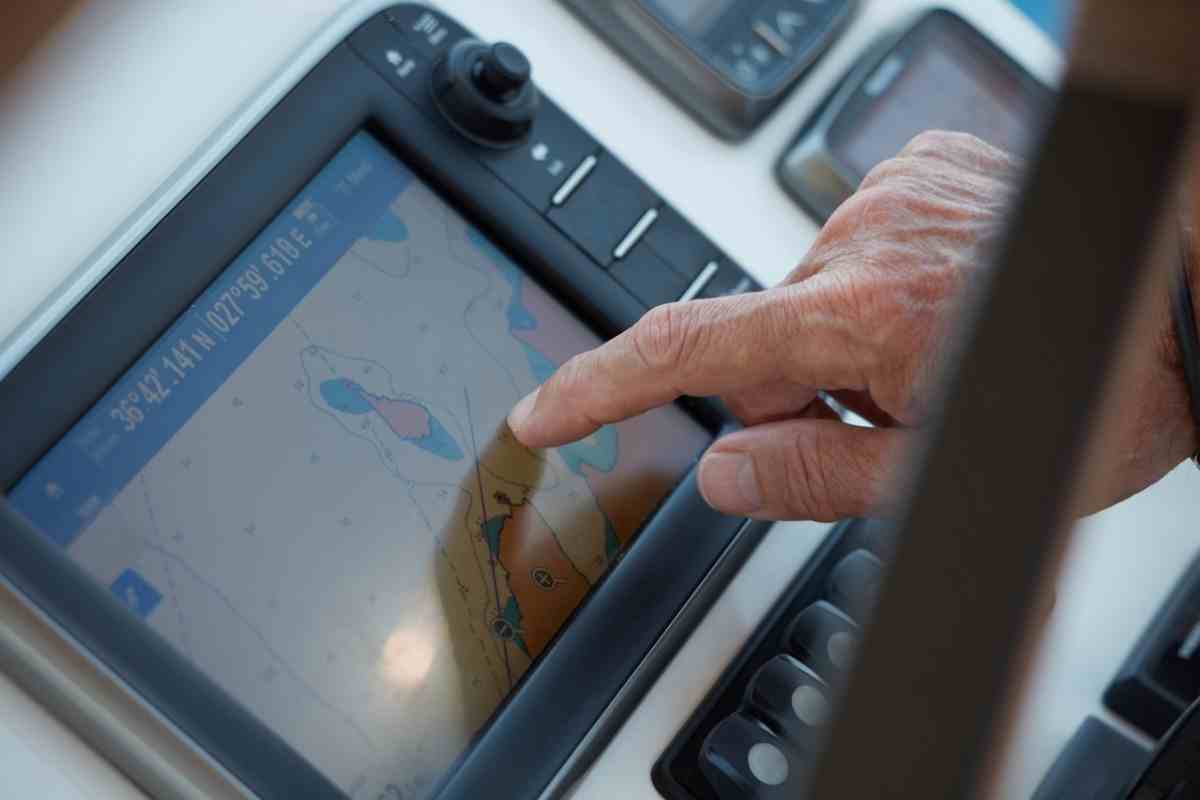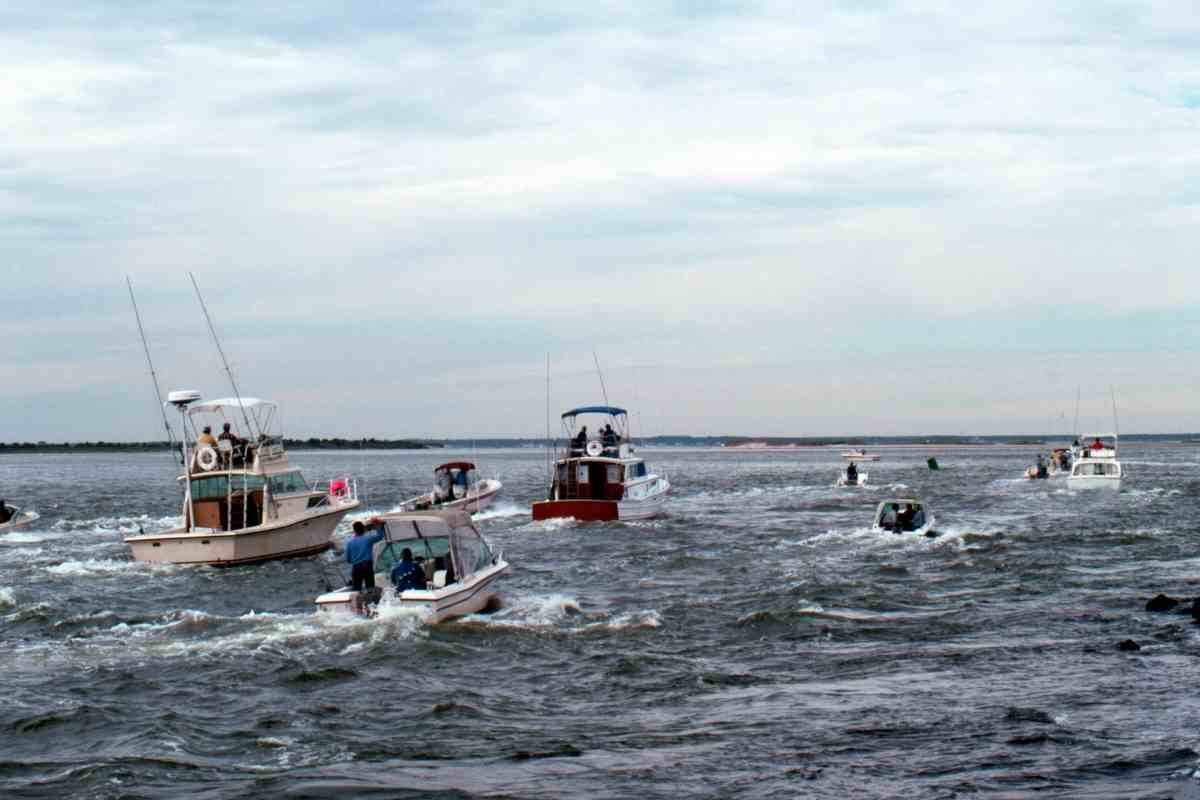Boat Navigation Rules: Quick Start Guide
The following article was generously provided by Paul Barnard, Recreational Boating Safety Program Manager, U.S. Coast Guard Eighth District
The Navigation Rules book is just over 200 pages long. Some of the more technical aspects can be complicated. Fortunately for us recreational boaters the situations we most often encounter and the rules we apply to those situations are few and they are simple. Let’s explore a few of the more commonly applied rules here.
All vessels are required at all times to keep a lookout by all available means. Everyone on the boat can and should play a role in keeping a lookout.
A GPS/Chartplotter and your radar, if equipped, should be used. We are required to proceed at a safe speed so that we can take action to avoid collision and to be stopped within a distance appropriate to the prevailing circumstances. Visibility and traffic density are a few factors to consider in establishing safe speed.

Many collisions occur at blind bends or other places where the operator’s sight line is diminished. We MUST assume there is another boat on the other side of that bend in the river, that peninsula or point in the lake or on the other side of that visual obstruction and we MUST adjust our speed accordingly.
The other boat may even be approaching at a high rate of speed. At night we are going to have to back off of the throttle. In fog or heavy rain, do not use a GPS as if it is a radar. It may show us where we are going, but it won’t show other boats. Every year boaters lose their lives using their GPS as their eyes in poor visibility.
3 Categories Of Boat Navigational Situations
Let’s look at how power boaters are required to operate in encounters with other power boaters on open waters. There are 3 basic categories of navigational situations. Overtaking situations, head-on situations and crossing situations.
In each of those there is a “stand on” vessel and a “give way” vessel. There are sound signals we may be required to use in these situations, but that’s a lesson for another day.
Boat Navigation: Overtaking
In overtaking situations, the vessel being overtaken is the stand on, and the vessel overtaking is give way. The vessel overtaking should give a wide berth to avoid a close call. The vessel being overtaken should maintain course and speed.
Any boat operator must take good look around before making a course or speed alteration. Crashes all too often happen when a boat is being overtaken. The operator doesn’t realize they are being overtaken, doesn’t take a look around and makes a turn directly in front of the overtaking boat.

Boat Navigation: Head on
Head on situations are easy. Generally we should set up to meet each other just like we do on the road. Each boat should bring the other down its port/left side absent other arrangements. The rules tell us to act early and decisively. Well before we come close to each other, each operator should make an appreciable alteration of course to starboard. In doing so we clearly communicate our intentions and open up enough sea room to keep from having a close call.
Boat Navigation: Crossing
In crossing situations the vessel that is to the starboard/right is the stand on vessel. When approaching a vessel that is to the right of us we are required to take early and decisive action. Well before it becomes a close call, we should set up to go well around the stern of the boat to our right.
We have all been out there on the water when the give way vessel continues to steer on a collision course with us leaving us wondering what they are going to do. Let’s not be that boater. Action should be EARLY and DECISIVE enough to be readily apparent to the other boater.
If a boat is operating in a channel and we are outside of the channel, the boat inside the channel may not be able to operate safely outside of the channel, and in such case will be the stand on vessel.
Crowded waterways are another place where collisions are more common.
On busy waterways we may have multiple navigational situations at the same time. If at any time we become unsure of how we should operate or of what the other boaters are doing, we are required to slow down.
Even if we are the stand on vessel we are required by the rules to take all action necessary to avoid collisions.
Navigation Lights
Let’s touch on navigation lights real quick. Let’s assume we are all on recreational power driven vessels less than 12 meters in length. We are required to have red and green sidelights.
They can be separate or in a combination light. We must also have a white all around light that must be high enough to be seen from 360 degrees. These must be purpose built navigation lights. LED strips and such do not meet the requirements
There are a dizzying array of auxiliary lights being marketed to and used by recreational boaters. It’s generally a bad idea to run with some of these auxiliary lights. We cannot burn auxiliary lights underway if they do the following: 1. Interfere with another boater’s ability to distinguish the lights we are required to burn. 2. May be mistaken for other lights specified in the rules. 3. Interfere with our ability or another boater’s ability to keep a proper lookout.
Let’s get into #3 a little bit. If we are burning a spotlight or a light bar, and that light is directed in the direction of another boater, we have just degraded their night vision and have violated the navigation rules. The presence of auxiliary lights on our boat may look cool, but they all too often present a confusing picture to other boaters and they without question degrade our own night vision. In that case, the auxiliary lighting is illegal as well. Auxiliary lighting enforcement is becoming a hot topic with boating law administrators all across the country. Expect to see more of an enforcement focus on this in the future.
In boating accidents there is generally not an “at fault” party. Since both parties have a legal duty to take all action necessary to avoid collision, when collisions are litigated each party is typically apportioned some percentage of the responsibility.
Who among us wants to be legally liable for any percentage of the value of a human life?
It’s difficult to reduce 200 plus pages of content to the most meaningful 2 pages of information. To that end all readers are encouraged to take a look at the navigation rules online.
They can be found easily using the search engine of your choice. Since states are not allowed to have Navigation Rules that conflict with the federal rules, you don’t have two sets of rules to play by.
